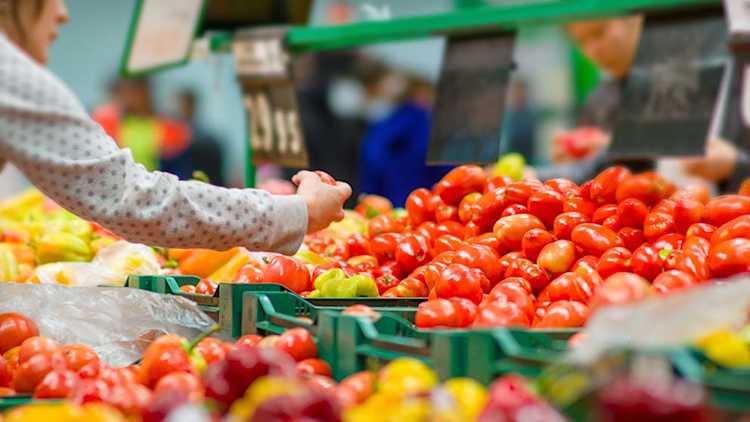Abating food inflation may not lead to food security gains

While Canada’s wealth and reputation for quality food products remains unparalleled, ranking second among the top countries in terms of quality of life, food affordability has declined in recent years. Factors such as inflation, adverse weather conditions, disruptions in global supply chains, increased input costs, and labour issues have largely contributed to this unfavourable development. This has led to rising food insecurity with surging prices of basic food commodities prompting households to make difficult choices. For the third year in a row, more than a fifth of the population is set to experience some form of food insecurity, evidenced by a projected decline in per capita real spending on food.
Current state of food insecurity in Canada
Statistics Canada defines food insecurity as the inability to have access to sufficient quantity of food largely due to financial constraints. Recent data from Statistics Canada estimated that in 2022, food insecurity affected 22.9% or 8.7 million Canadians, marking the highest rate since the inception of food insecurity data in 2018 (Figure 1). Since 2022, Canadians have experienced elevated levels of inflation in prices of food, housing, and other basic needs. Food inflation outpaced general inflation and income, resulting in a decline in food expenditures in real terms (i.e. adjusted for inflation) and consequently, an increase in food insecure households.
The reduction in real food spending is particularly noticeable on a per-capita basis, with 2022 registering the largest annual decline since 1961 (Figure 1). With per-capita real spending in Canadian households falling again last year, and expected to fall further this year, food insecurity is anticipated to remain high among Canadians. The moderation of food inflation should, however, provide some relief.
Figure 1: Food insecurity surged to a record high in 2022

Sources: Statistics Canada, FCC Economics
How does Canada compare with peers?
The annual food inflation rate has fallen from a peak of 10.4% in January of last year to just 2.3% in April 2024 and is expected to fall below 2% by year-end. We have seen similar declines in food inflation across the globe, thanks largely to improving supplies of agricultural commodities and fewer disruptions on global supply chains.
In wealthy economies, food constitutes a smaller portion of total consumer spending. Over the past decade, Canada’s position among the G7 has been the third lowest in terms of the ratio of food expenditure to total consumption expenditure, behind only the US and UK, while Japan had the highest ratio. This is not expected to change this year (Figure 2).
Figure 2: Food spending as a share of total consumption

Sources: OECD, FCC Economics
Who are the most vulnerable to food insecurity?
Lower income households bear the burden of food insecurity more than their average or high-income counterparts. Typically, the lowest income group allocates over 20% of their disposable income towards food-related expenses, while the average and highest income households tend to spend around 10% and 5% respectively (Figure 3).
For 2024, FCC Economics forecasts food prices and spending patterns to remain similar to last year although food inflation is expected to moderate. The affordability of food and other essential life necessities will therefore continue to be a major concern for Canadians.
Figure 3: Food expenditure as a percentage of disposable household income

Sources: Statistics Canada, FCC Economics
Examining the relationship between income and food insecurity
Canadian households rely on income to meet their basic needs. While the relationship between income and food insecurity is complex, it is reasonable to infer that households will face a greater risk of food insecurity when prices rise faster than disposable income.
Post-pandemic, wage growth lagged inflation, reducing household purchasing power. Wages are catching up with inflation, although wage growth has been moderating lately. So, while growth in wages has improved, the impact on food security is expected to be modest.
To explore the impact of income on food insecurity, we leveraged the relationship between the proportion of the population who are food insecure and the annual change in real (adjusted for inflation, which is a proxy for consumption) per-capita spending on food. An increase in real per-capita spending on food leads to improved food security, which translates to a reduction in the number of food insecure households in Canada. Yet, 2024 projections suggest real per-capita spending will decline, suggesting food insecurity will continue to be a challenge.
What can be done to reduce food insecurity in Canada
Improving food insecurity requires a comprehensive strategy, involving the entire food supply chain. Rekindling productivity at the farm, food processing and retail levels can boost production and enhance food affordability. FCC’s Drive Away Hunger is an industry-driven initiative to fight against food insecurity. Through this initiative, farmers, processors, distributors, grocers, and others have come together to make a positive impact in the lives of vulnerable Canadians. In 2023, the Canadian food industry collectively contributed more than 140 million meals to support food insecure Canadians through charitable organizations such as Food Banks Canada and Second Harvest Canada. Going forward FCC will continue to collaborate with partners to identify opportunities and create meaningful results in communities across the country in the quest to curb food security.

Senior Economist
Isaac Kwarteng is a Senior Economist at FCC, focusing on long-term economic research and forecasting to support strategy and risk. He also supports the CEO’s office with information and data requests.
Isaac joined FCC in 2023 from the Government of Saskatchewan, where he worked for a decade in economic, research and statistical roles.
Isaac received his master’s degree in economics from the University of East Anglia in the UK. He also has a master’s degree in statistics from the University of Regina and is currently enrolled in the Ph.D. program.
